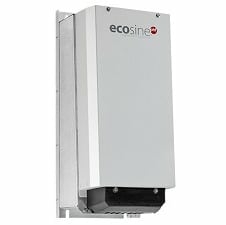source: Schaffner news
TheSchaffner Group continuous to broaden ecosine evo series, the newgeneration of passive harmonic filters with an evolutionary modular concept and unparalleled technology.
Schaffner, the international leader in the fields of electromagnetic compatibility and power quality, is again setting a benchmark with its product offering of harmonics mitigation solutions. Ecosine evo combine superior technology to reliably mitigate excessive harmonics with an evolutionary modular product concept.
With the new ecosine filters FN 3441, FN 3451 and FN 3453 Schaffner does now also offer dedicated filters which are designed for three-phase diode with included DC-link choke in the drive. Also this three new series are achieving a THID ≤ 5%. They guarantee compliance with the toughest requirement of IEEE-519 and other stringent international power quality standards while being the most dedicated and compact passive harmonic filters available in the market. The filters offer excellent performance at rated power with minimal reactive power, even at partial or no-load conditions. With the installation of the new ecosine filters, the electrical infrastructure is unburdened and its utilization is much more efficient and reliable. Furthermore, the service life cycle of electrical equipment is extended and energy costs are reduced.
Thanks to the modular concept which now includes filters for drives without (FN 3440, FN 3450, FN 3452) and drives with included DC-link choke (FN 3441, FN 3451, FN 3453) ecosine evo filter series offers a market unique flexibility. It allows Schaffner to provide the optimal solution by offering base modules that are dedicated to the drive technology and can additionally adapted to application and customer needs as well as installation requirements by merely “plugging in add-on modules”. Thus utilizing the new Schaffner modular filters allows for the best tailored solutions for applications, aligning product offerings with the international market requirements and customer expectations.
Ecosine evo filters FN 3440/41 FN 3450/51 and FN 3452/53 are rated for 50 Hz/400 VAC, 50 Hz/500 VAC and 60 Hz/480 VAC grids, respectively, with standard power ratings available from 1.1 to 250 kW (1.5 to 300 HP for 60 Hz filters). They are available as open frame IP 00 and protection category IP 20 (IP 21 as an option). All filters are CE-marked, UL listed and RoHS compliant.
Ecosine evo filters are easy to install and maintain and are fully supported in Schaffner’s well known power quality simulator SchaffnerPQS3 and can be configured using the new Schaffner ecosine evo online configurator.
































